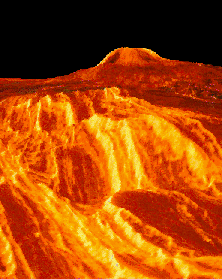This is an image of Venus.
Click on image for full size
NASA
Does Venus Have a Surface in Motion?
Like Mars, there is no plate tectonics on the surface of Venus. The surface of Venus does not *seem* to have changed or moved in billions of years. Unlike the case of Mars, however, careful examination of the evidence supports the idea that the surface of Venus may be active in a way that is very different from the Earth.
Evidence comes from the number of craters found on the surface. Although heavy cratering has stopped, some cratering continues to this day. The impact of the SL-9 comet shows that planets can still be hit by objects in space. Craters are wiped out when the surface of a planet moves.
The cratering record of Venus is *very* peculiar in that
- all surfaces are evenly cratered
- the number of craters is roughly the same as that of the Earth at present.
- the number of craters suggests an age for the surface of Venus of not more than 500 million years! (There are areas of Earth that are very much older.)
Features which suggest a lithosphere in motion are present, but few on Venus. This evidence suggests that Venus has a completely different
cooling history than that of the Earth, and the entire surface is forced to change every few hundred million years or so!
You might also be interested in:

How did life evolve on Earth? The answer to this question can help us understand our past and prepare for our future. Although evolution provides credible and reliable answers, polls show that many people turn away from science, seeking other explanations with which they are more comfortable.
...more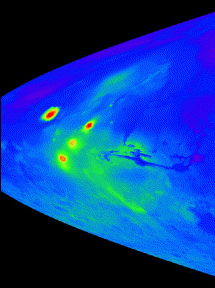
Unlike Earth, there is no continental drift on Mars today. The Martian surface does not seem to have changed or moved in billions of years. The evidence for this fact can be found in two ways. 1.) The
...more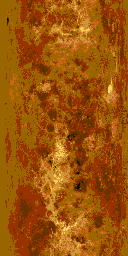
This is a map of the surface of Venus (turned sideways!). As can be seen on the map, the surface of Venus consists of 2 large continents with mountain ranges, and a few large islands. There are many craters,
...more
As the process which formed them came to an end, the planets may have been left in either of the following two states: very warm, separated into layers, with lots of water on the surface, with volcanic
...more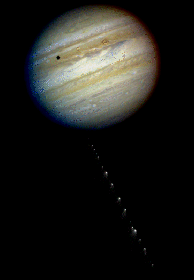
The pieces of Comet Shoemaker-Levy 9 received names! However not all of the segments were detected, and some sections broke apart into two or more pieces after the original piece had been named. These
...more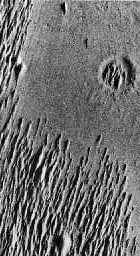
Over the course of time there are many things which can cause the surface of a planet to change its appearance. winds, as shown in the example from the Martian surface Monument Valley on Earth is an example
...more
This is an example of cratered ground on Venus. Venusian craters are a little unusual in that there is a large amount of melted ground around the crater. This may mean that when something hits the surface
...more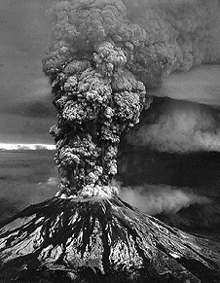
Let's look at the evidence: Mercury Venus The Moon Mars Io Europa Ganymede Callisto Triton Miranda What about Jupiter, Saturn, Uranus, Neptune, Titan, or Pluto? These planets or moons either have no surface,
...more


